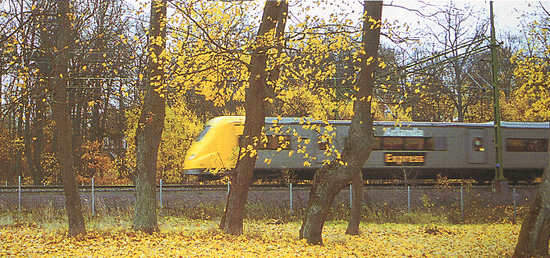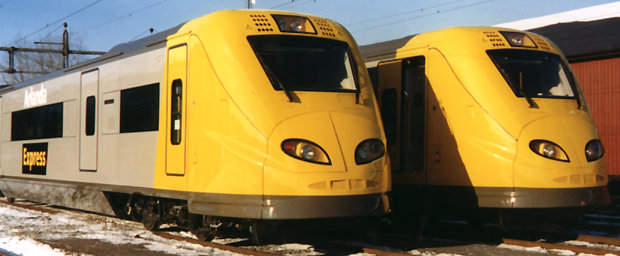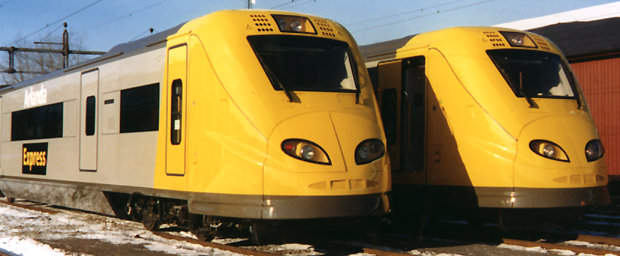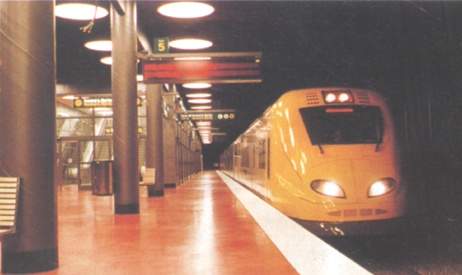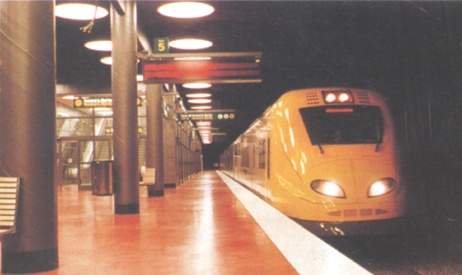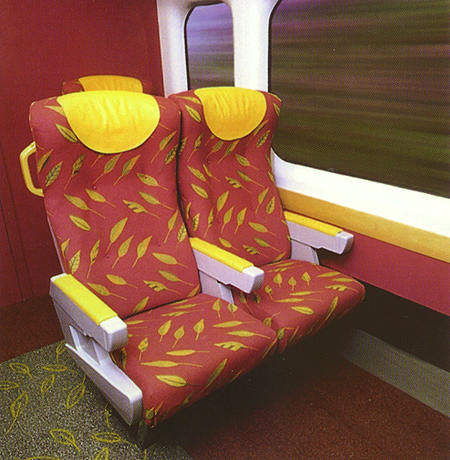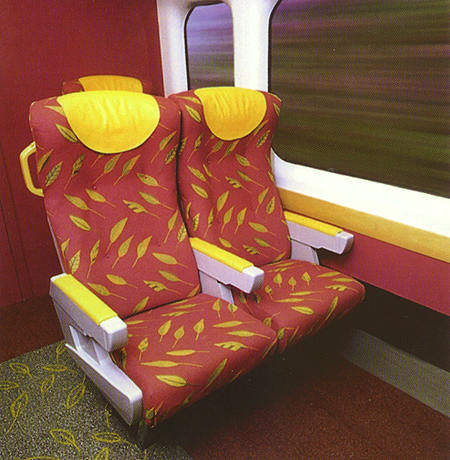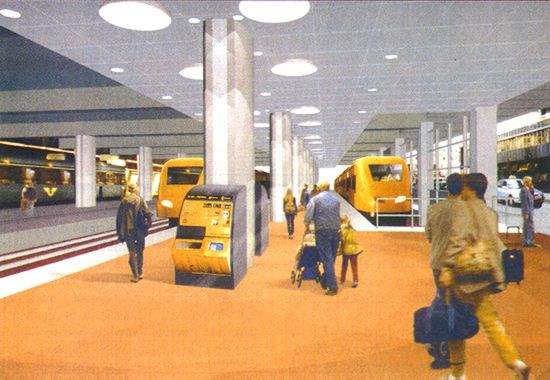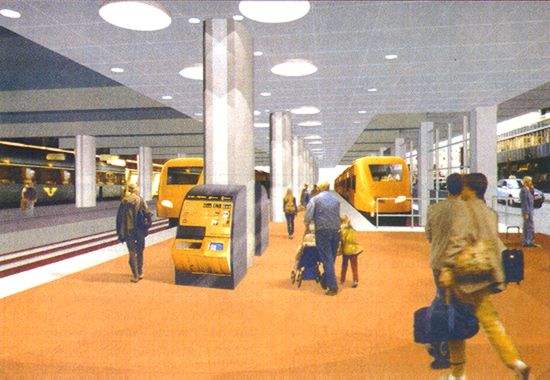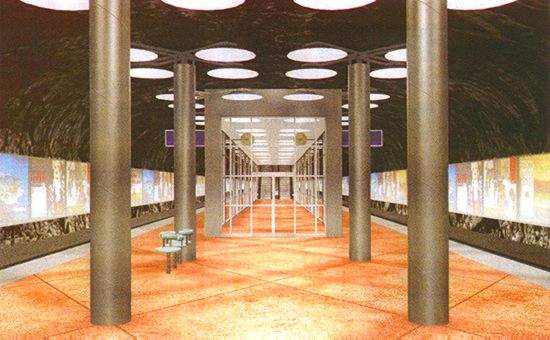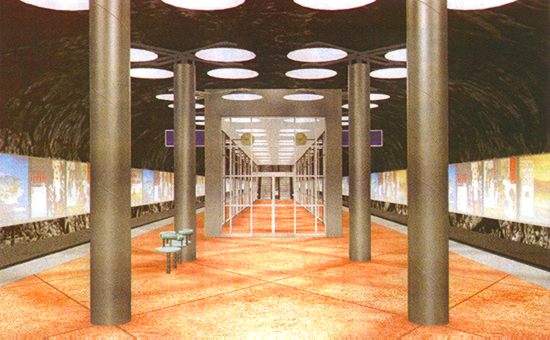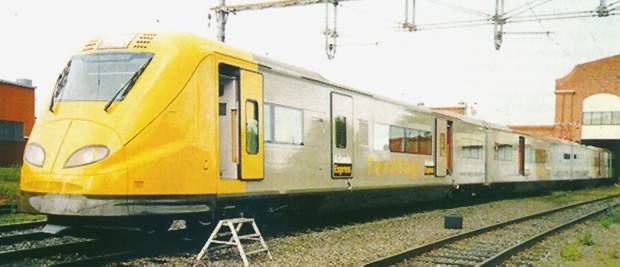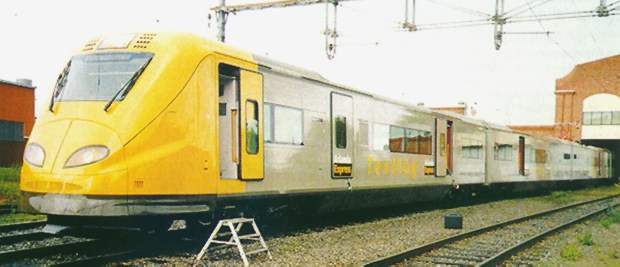November 1999 saw the inauguration of the dedicated, high-speed rail link between Stockholm Central railway station and the city’s main airport at Arlanda. The airport is at a competitive disadvantage over other major city air terminals as it is 42km (26 miles) from the city centre.
A 1989 study questioned the viability of such a link so, as a stop-gap measure, the line from Ulriksdal to Rosersborg was widened from two to four tracks.
THE PROJECT
In 1993, tenders were called for a new public-private venture line from Rosersborg, over Arlanda and back to the main line at Odensala. A consortium of the Swedish construction companies NCC and Siab, the power utility Vattenfall and the British companies Mowlem and ALSTOM, formed a ‘finance, build and operate’ company, A-Train AB.
The original city-airport target journey time was 20 minutes with trains running every 15 minutes between 0600 and 1930 each weekday. The Arlanda Link Consortium started work in 1995 and the summer 1999 completion date was delayed to allow stringent reliability and punctuality targets to be met. A-Train then transferred the entire system to the Swedish state for lease back to the operator.
INFRASTRUCTURE
The Arlanda link comprises 40km of track, three underground stations and 9.2km of tunnels. The airport has two stations used by the dedicated link service: Sodra, serving terminals 2, 3 and 4, and Norra, linked to terminal 5 and Sky City, the commercial complex. A third station is used by intercity and regional trains and Stockholm commuter services.
The airport stations are built in 22m-deep rock caverns and the line has about 20 bridges, tunnels and portals. Mowlem installed 39km of track, including 29 turnouts and crossovers. Airport trains use platform one at Stockholm Central.
ROLLING STOCK
Services are operated by seven dedicated four-car electric units built by ALSTOM, capable of 200km/h speeds. Their bodyshells were built in Barcelona, Spain, and bogies in France, with final assembly at Washwood Heath, Birmingham, UK. The trains are maintained at a new purpose-built depot.
Each vehicle is 93m long with 190 seats and substantial luggage space. Power comes from ALSTOM’s ONIX traction system and there is regenerative, disc and track braking. The testing cycle involved 130,000km of running and 1,150 round trips, designed to ensure the target availability of 98% or better was achieved.
SIGNALLING/COMMUNICATIONS
Each train is fitted with automatic train protection and a driver-operated radio system, supplied by Adtranz under contract to ALSTOM. Three interlocking computers oversee the main communications system.
Train departure display systems at Stockholm Central and airport stations, supplied by Adtranz, are controlled centrally. German company Alcatel supplied an on-board radio system compatible with other rail operators, and a separate system for use with emergency services. The line also has automatic fare collection and ticketing equipment.
THE FUTURE
On opening, a 20-minute interval service was introduced, running at 160km/h, although the capacity is available to shorten the journey time from 19 to 15 minutes. A-Train will receive all proceeds from fares for the remainder of its license term until 2040.

